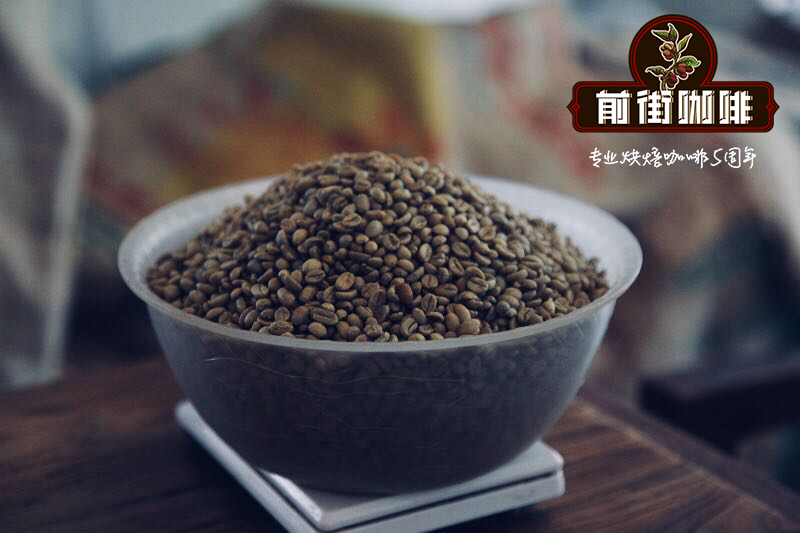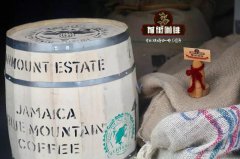Coffee bean producing countries have a strict grading system, what are the specific standards?

Professional coffee knowledge exchange more coffee bean information please follow the coffee workshop (Wechat official account cafe_style)
The Brazilian classification system also includes bean size, color, density, shape, baking potential, cup quality, processing method, age and batch number of coffee trees. The Brazilian grading system, which scores the proportion, size, flavor and taste of defects, is its own independent grading system, which is more complex than that from other countries. For example, the "Brasil Santos NY2 SC17/18 SS FC" NY2 classifies the proportion of defects: the higher the number, the greater the proportion of defects. The order is 2, 2, 3, 3, 3, 4... NY says it is based on the New York rating standard.
Ethiopia produces some really high-quality, world-class coffee, which is usually simply graded by processing, origin and a rating number from 1 to 8, each representing the number of beans owed. Ethiopia's coffee grading and quality control system has two main indicators: visual inspection and cup evaluation, including the color, cleanliness, origin, taste and characteristics of coffee beans. The export rating is marked by simple numbers, with the best washed coffee at level 5 and the best sun-cured coffee at level 4. After grading, mark the place of origin and then export. Exports are usually paid by letter of credit, which can not only reduce the risk of foreign exchange collection for exporters, but also give quality assurance to importers.
The Colombian method of grading is simpler: each bag has its origin and is classified by size. For example, Excelso coffee beans are smaller than Supremo coffee beans. Supremo super class, Excelso preferred class. The former is bean size 17, which is generally high-quality washed Arabica beans. Supremo Screen 18 + refers to the fine beans above 18.
Indonesia recently changed the previous Dutch grading system. Now, R (Robusta) is Robusta, A (Arabica) is Arakabi, WP (wet processed) is the wet processing of coffee beans, and DP (dryprocessed) is the dry processing of coffee beans; six graded numbers: 1 and 2 are high, 3 and 4 are intermediate, and 5 and 6 are low; after the grading number, AP represents the polished, and L, M and S represent the size, medium and small of the beans. For example, R/DP Grade 2L is high-quality dry-processed large Robusta coffee beans; A/WP Grade3/AP is medium-quality Arabica coffee after being washed and polished.
Nicaragua will also use headings like this to indicate the classification of quality and altitude: central Bueno Ravedo (Central Bueno Lavado), Central Otura (Center Altura) planted in high and low, and Central Estratemen Otura (Center Estrictamente Altura). Guatemala's altitude indication is more vague because those altitude words that sound like purely descriptive adjectives start at 700m and rise to 1700 Michael degrees: Good Washed (good washed coffee beans), Extra Good Washed (well washed coffee beans), Extra Prime Washed (super washed coffee beans), Semi Hard Bean (HB) (hard beans), Fancy Hard Bean (strange hard beans) and Strictly Hard Bean (very hard beans).
.
END
For more professional coffee exchanges, please scan the code and follow Wechat: qiannjie

Please indicate the source of the reprint.
Important Notice :
前街咖啡 FrontStreet Coffee has moved to new addredd:
FrontStreet Coffee Address: 315,Donghua East Road,GuangZhou
Tel:020 38364473
- Prev

It is a waste to dump the expired coffee beans directly. We can make use of the coffee beans.
Professional coffee knowledge exchange more coffee bean information please pay attention to the coffee workshop (Wechat official account cafe_style) coffee beans can also play a big role, the following includes its five functions: 1. Plant nutrients; coffee beans contain the nutrients needed for plant growth. As long as you break the expired coffee beans and pour them into a flowerpot, they can serve as fertilizer.
- Next

What is Viennese coffee, the origin of Vienna
Professional coffee knowledge exchange more coffee bean information please follow coffee workshop (Wechat official account cafe_style) Viennese coffee is a similar specialty coffee to drink cappuccino. The difference is sometimes thought to be that Melange is made from milder coffee, but Julius Meinl, a Viennese coffee company, describes Wiener Melange as a large one with steamed milk and milk foam.
Related
- How did the Salvadoran coffee industry develop in Central America?
- What exactly does the golden cup extraction of coffee mean?
- The Origin of Coffee flower
- [2023 Starbucks World Earth Day] there are more meaningful things besides free Starbucks coffee!
- What kind of coffee is there in Spain? 9 Flavors of Spanish Coffee
- Aromatic African coffee| Kenya's coffee culture and historical production area
- Liberica Coffee Bean knowledge: the characteristics of Liberian Coffee beans of the three original species of Coffee beans
- The origin and formula of Spanish latte introduces the taste characteristics of Bombon coffee in Valencia, Spain.
- How to adjust the solution of over-extracted coffee
- What is the tasting period of coffee beans? What is the period of coffee and beans? How should coffee wake up and raise beans?

